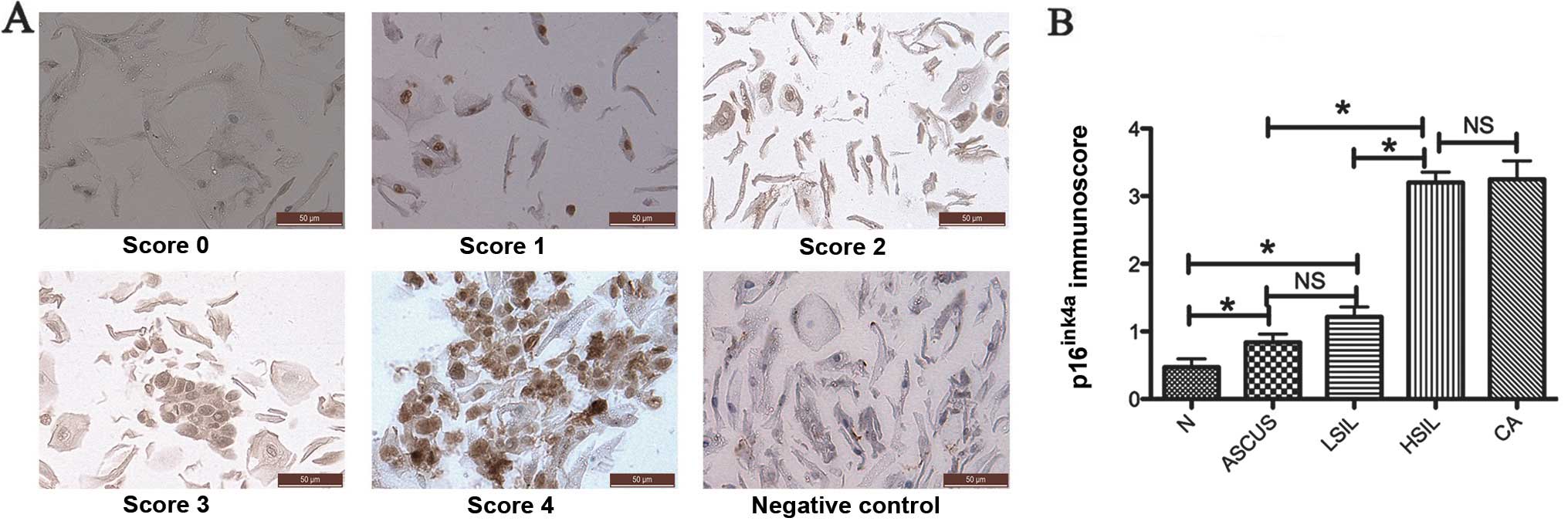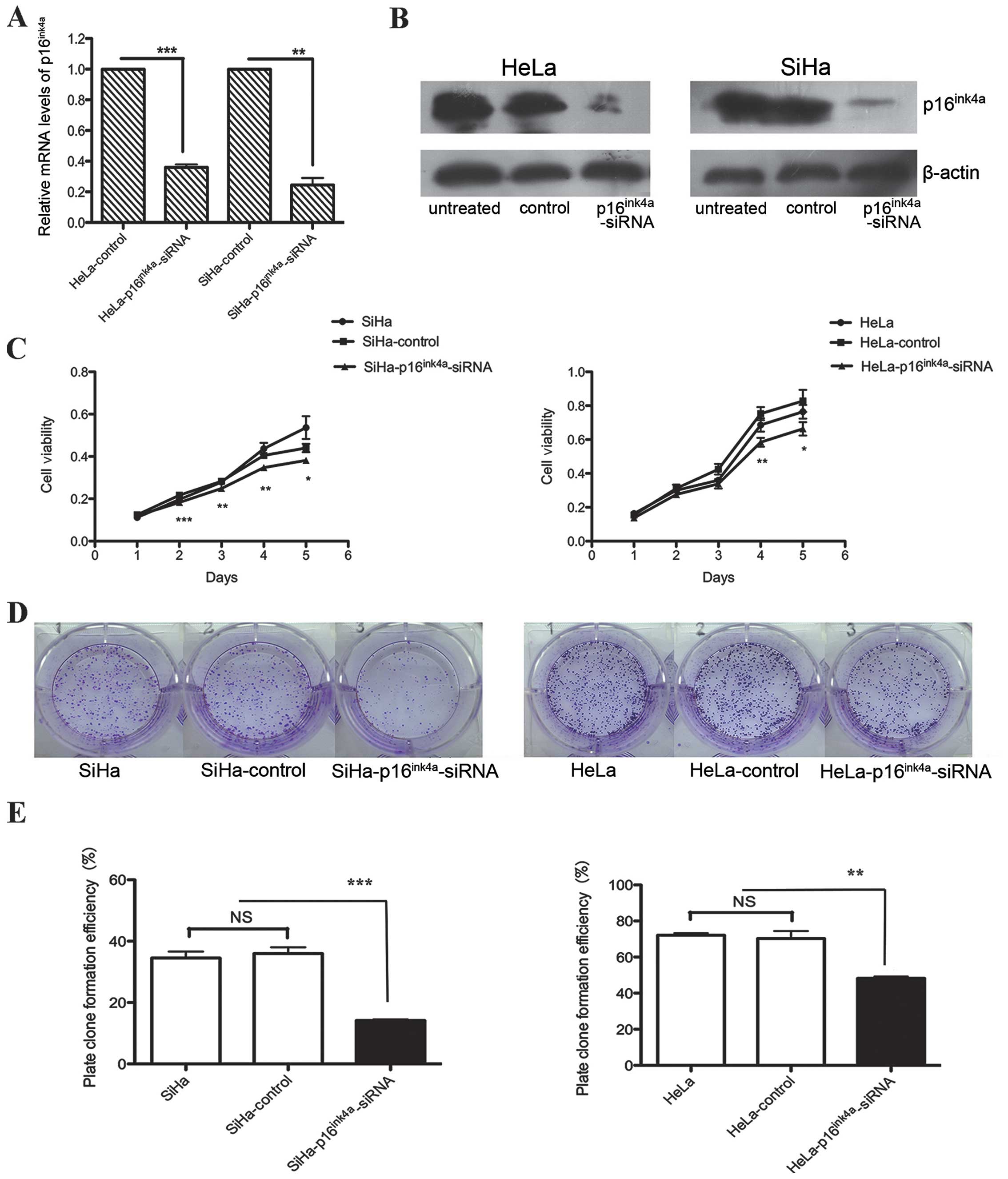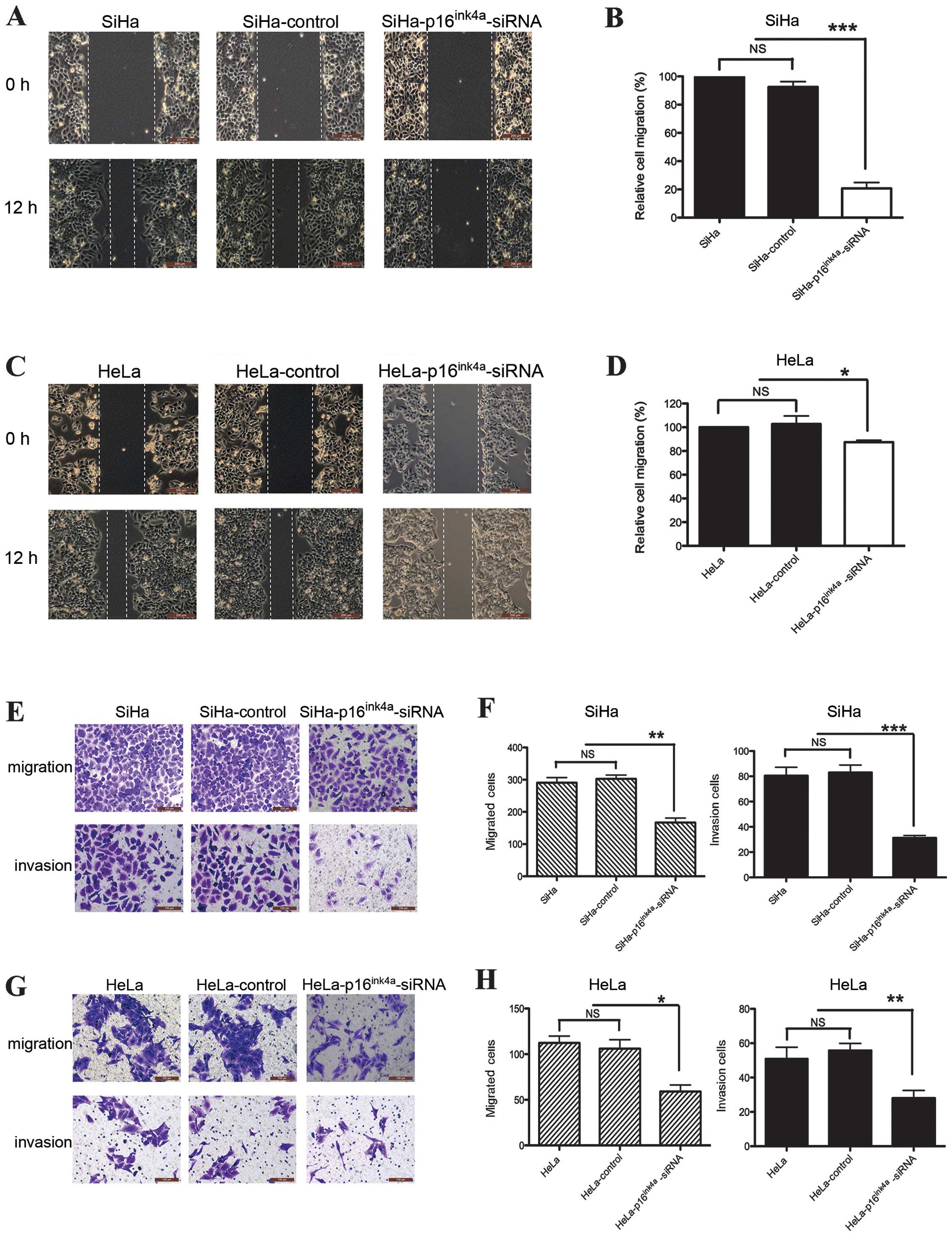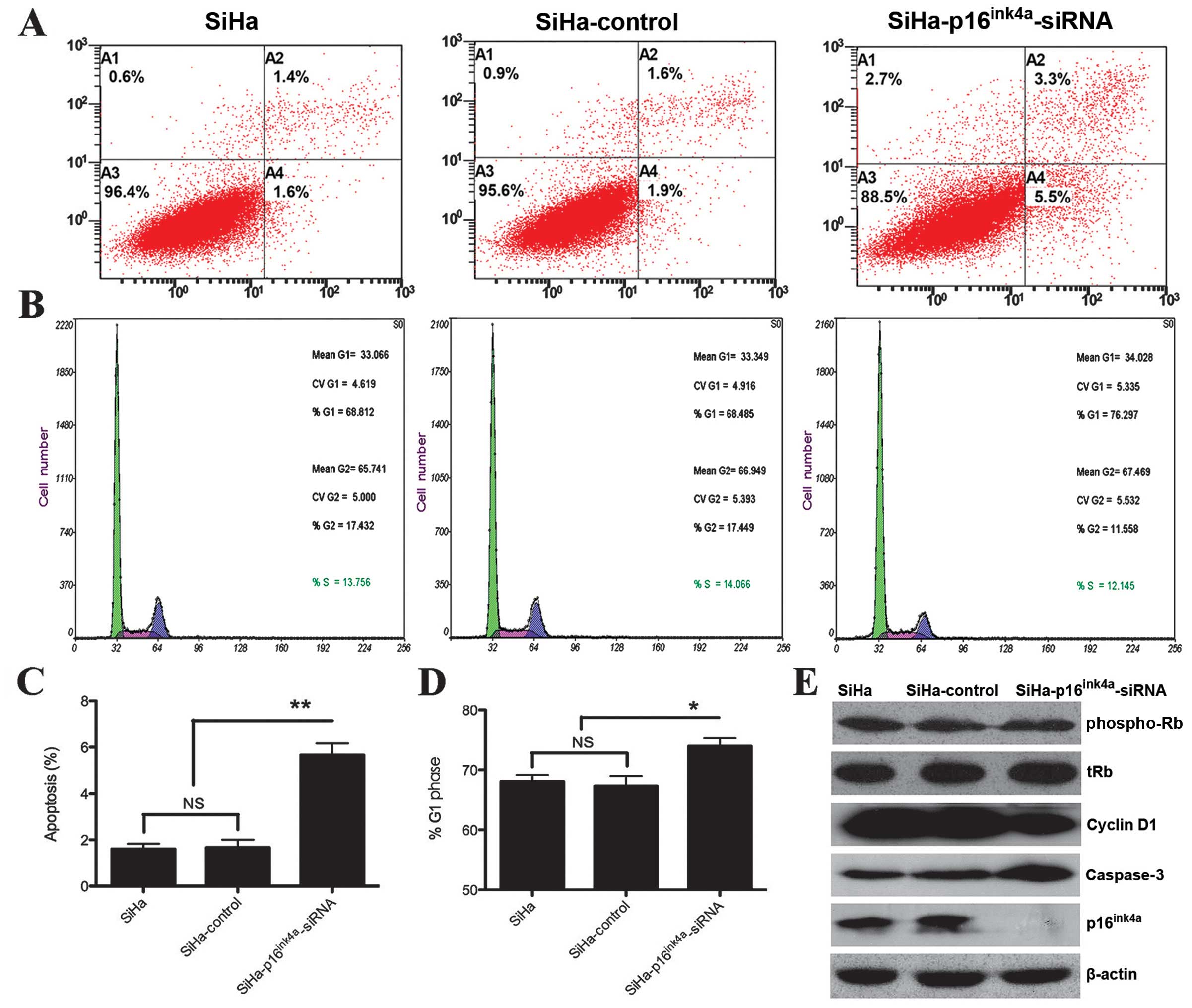|
1
|
Jemal A, Bray F, Center MM, Ferlay J, Ward
E and Forman D: Global cancer statistics. CA Cancer J Clin.
61:69–90. 2011. View Article : Google Scholar
|
|
2
|
Siegel R, Naishadham D and Jemal A: Cancer
statistics, 2012. CA Cancer J Clin. 62:10–29. 2012. View Article : Google Scholar
|
|
3
|
Mayrand MH, Duarte-Franco E, Rodrigues I,
et al: Human papillomavirus DNA versus Papanicolaou screening tests
for cervical cancer. N Engl J Med. 357:1579–1588. 2007. View Article : Google Scholar : PubMed/NCBI
|
|
4
|
Gustafsson L, Pontén J, Zack M and Adami
HO: International incidence rates of invasive cervical cancer after
introduction of cytological screening. Cancer Causes Control.
8:755–763. 1997. View Article : Google Scholar : PubMed/NCBI
|
|
5
|
Kent A: HPV vaccination and testing. Rev
Obstet Gynecol. 3:33–34. 2010.
|
|
6
|
Wang Y, Chen J, Zhang W, Hong W and Yu F:
Study of the prevalence of human Papillomavirus infection in
Chinese women with cervical cancer. Afr J Microbiol Res.
6:1048–1053. 2012.
|
|
7
|
Mathew A and George PS: Trends in
incidence and mortality rates of squamous cell carcinoma and
adenocarcinoma of cervix-worldwide. Asian Pac J Cancer Prev.
10:645–650. 2009.PubMed/NCBI
|
|
8
|
Siegel R, Ward E, Brawley O and Jemal A:
Cancer statistics, 2011: the impact of eliminating socioeconomic
and racial disparities on premature cancer deaths. CA Cancer J
Clin. 61:212–236. 2011. View Article : Google Scholar : PubMed/NCBI
|
|
9
|
Kool J, Uren AG, Martins CP, et al:
Insertional mutagenesis in mice deficient for p15Ink4b, p16Ink4a,
p21Cip1, and p27Kip1 reveals cancer gene interactions and
correlations with tumor phenotypes. Cancer Res. 70:520–531. 2010.
View Article : Google Scholar : PubMed/NCBI
|
|
10
|
Duan J, Chen Z, Liu P, Zhang Z and Tong T:
Wild-type p16ink4a suppresses cell growth, telomerase activity and
DNA repair in human breast cancer MCF-7 cells. Int J Oncol.
24:1597–1605. 2004.PubMed/NCBI
|
|
11
|
Yang CT, You L, Lin YC, Lin CL, Mccormick
F and Jablons DM: A comparison analysis of anti-tumor efficacy of
adenoviral gene replacement therapy (p14ARF and p16INK4A) in human
mesothelioma cells. Anticancer Res. 23:33–38. 2003.PubMed/NCBI
|
|
12
|
Wu Q, Possati L, Montesi M, et al: Growth
arrest and suppression of tumorigenicity of bladder-carcinoma cell
lines induced by the P16/CDKN2 (p16INK4A, MTS1) gene and other loci
on human chromosome 9. Int J Cancer. 65:840–846. 1996. View Article : Google Scholar : PubMed/NCBI
|
|
13
|
Martin CM and O’Leary JJ: Histology of
cervical intraepithelial neoplasia and the role of biomarkers. Best
Pract Res Clin Obstet Gynaecol. 25:605–615. 2011. View Article : Google Scholar : PubMed/NCBI
|
|
14
|
Klaes R, Friedrich T, Spitkovsky D, et al:
Overexpression of p16 (INK4A) as a specific marker for dysplastic
and neoplastic epithelial cells of the cervix uteri. Int J Cancer.
92:276–284. 2001. View
Article : Google Scholar
|
|
15
|
Murphy N, Ring M, Heffron CC, et al:
p16INK4A, CDC6, and MCM5: predictive biomarkers in cervical
preinvasive neoplasia and cervical cancer. J Clin Pathol.
58:525–534. 2005. View Article : Google Scholar : PubMed/NCBI
|
|
16
|
Wentzensen N, Bergeron C, Cas F,
Eschenbach D, Vinokurova S and von Knebel Doeberitz M: Evaluation
of a nuclear score for p16INK4a-stained cervical squamous cells in
liquid-based cytology samples. Cancer. 105:461–467. 2005.
View Article : Google Scholar : PubMed/NCBI
|
|
17
|
Bao W, Qiu H, Yang T, et al: Upregulation
of TrkB promotes epithelial-mesenchymal transition and anoikis
resistance in endometrial carcinoma. PLoS One. 8:e706162013.
View Article : Google Scholar : PubMed/NCBI
|
|
18
|
Peto J, Gilham C, Fletcher O, et al: The
cervical cancer epidemic that screening has prevented in the UK.
Lancet. 364:249–256. 2004. View Article : Google Scholar : PubMed/NCBI
|
|
19
|
Cuzick J, Arbyn M, Sankaranarayanan R, et
al: Overview of human papillomavirus-based and other novel options
for cervical cancer screening in developed and developing
countries. Vaccine. 26(Suppl 10): K29–K41. 2008. View Article : Google Scholar : PubMed/NCBI
|
|
20
|
Yoshida T, Fukuda T, Sano T, et al:
Usefulness of liquidbased cytology specimens for the
immunocytochemical study of p16 expression and human papillomavirus
testing: a comparative study using simultaneously sampled histology
materials. Cancer. 102:100–108. 2004. View Article : Google Scholar
|
|
21
|
Kerr JF, Wyllie AH and Currie AR:
Apoptosis: a basic biological phenomenon with wide-ranging
implications in tissue kinetics. Br J Cancer. 26:239–257. 1972.
View Article : Google Scholar : PubMed/NCBI
|
|
22
|
Evan G and Littlewood T: A matter of life
and cell death. Science. 281:1317–1322. 1998. View Article : Google Scholar : PubMed/NCBI
|
|
23
|
Molinari M: Cell cycle checkpoints and
their inactivation in human cancer. Cell Prolif. 33:261–274. 2000.
View Article : Google Scholar : PubMed/NCBI
|
|
24
|
Liu W, Lv G, Li Y, Li L and Wang B:
Downregulation of CDKN2A and suppression of cyclin D1 gene
expressions in malignant gliomas. J Exp Clin Cancer Res. 30:762011.
View Article : Google Scholar : PubMed/NCBI
|
|
25
|
Zadeh MD, Amini R, Firoozray M and
Derakhshandeh-Peykar P: Frequent homozygous deletion of p16/CDKN2A
gene in malignant gliomas of Iranian patients. Pak J Biol Sci.
10:4246–4250. 2007. View Article : Google Scholar : PubMed/NCBI
|
|
26
|
Kraus JA, Glesmann N, Beck M, et al:
Molecular analysis of the PTEN, TP53 and CDKN2A tumor suppressor
genes in long-term survivors of glioblastoma multiforme. J
Neurooncol. 48:89–94. 2000. View Article : Google Scholar : PubMed/NCBI
|
|
27
|
Bignell GR, Greenman CD, Davies H, et al:
Signatures of mutation and selection in the cancer genome. Nature.
463:893–898. 2010. View Article : Google Scholar : PubMed/NCBI
|
|
28
|
Beroukhim R, Mermel CH, Porter D, et al:
The landscape of somatic copy-number alteration across human
cancers. Nature. 463:899–905. 2010. View Article : Google Scholar : PubMed/NCBI
|
|
29
|
Anders L, Ke N, Hydbring P, Choi YJ, et
al: A systematic screen for CDK4/6 substrates links FOXM1
phosphorylation to senescence suppression in cancer cells. Cancer
Cell. 20:620–634. 2011. View Article : Google Scholar : PubMed/NCBI
|
|
30
|
Yu Q, Sicinska E, Geng Y, et al:
Requirement for CDK4 kinase function in breast cancer. Cancer Cell.
9:23–32. 2006. View Article : Google Scholar : PubMed/NCBI
|
|
31
|
Puyol M, Martín A, Dubus P, et al: A
synthetic lethal interaction between K-Ras oncogenes and Cdk4
unveils a therapeutic strategy for non-small cell lung carcinoma.
Cancer Cell. 18:63–73. 2010. View Article : Google Scholar : PubMed/NCBI
|


















